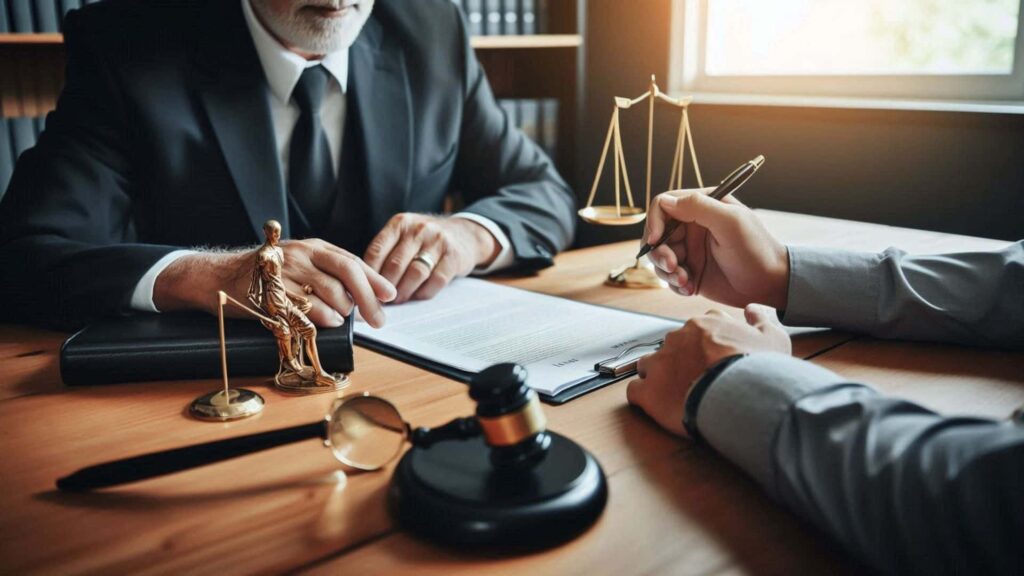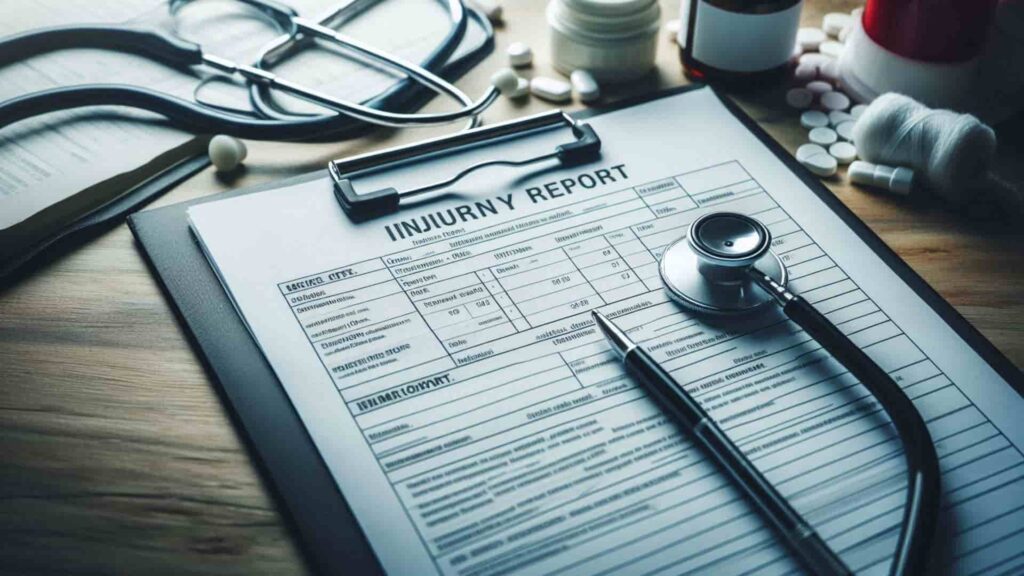
Filing a personal injury lawsuit can feel like an overwhelming process, especially when you’re already dealing with physical pain and emotional stress. Whether it’s from a car accident, slip-and-fall, medical malpractice, or another incident caused by someone else’s negligence, understanding the steps involved in filing a lawsuit is essential. By following the right steps and being informed, you can ensure that your claim is strong and that you have the best chance of receiving fair compensation.
In this comprehensive guide, we will go step-by-step into everything you need to know about filing a personal injury lawsuit. From gathering evidence to the courtroom trial, this article will break down each phase of the process. We’ll also address common concerns and provide practical tips to help you navigate the legal system successfully.
What is a Personal Injury Lawsuit?
A personal injury lawsuit is a legal claim filed by an individual (the plaintiff) who has been injured due to the negligence or wrongful actions of another party (the defendant). The goal of such lawsuits is to recover compensation, or “damages,” for the injuries sustained. This can include compensation for medical expenses, lost wages, pain and suffering, emotional distress, and other related losses.
Key Components of a Personal Injury Lawsuit
To succeed in a personal injury lawsuit, several elements must be proven:
- Duty of Care: The defendant owed a duty of care to the plaintiff. This means they had a legal obligation to act in a way that did not cause harm to others. For example, drivers have a duty to follow traffic laws and drive safely.
- Breach of Duty: The defendant breached this duty by acting negligently or recklessly. For instance, a driver texting while driving breaches their duty of care to other drivers and pedestrians.
- Causation: The plaintiff must prove that the defendant’s breach of duty directly caused their injuries. This is known as “causation.”
- Damages: Finally, the plaintiff must show that they suffered actual damages, whether physical, emotional, or financial, as a result of the defendant’s actions.
Once these elements are proven, the plaintiff may be entitled to compensation.
Step 1: Immediate Action After the Incident
The first step in any personal injury case is to take immediate action after the accident or injury occurs. What you do in the hours and days following the incident can significantly impact your ability to successfully file a personal injury lawsuit later.

1.1 Seek Medical Attention
The most important thing you should do after any accident is seek medical attention. Even if you feel fine or think your injuries are minor, it’s essential to get checked out by a medical professional. Not only is this critical for your health, but it also creates an official medical record of your injuries, which will be crucial in your lawsuit.
Why is Medical Documentation Important? Medical records serve as key evidence in personal injury cases. If you delay seeking treatment, the defense might argue that your injuries were not serious or that they weren’t caused by the accident at all. Prompt medical care helps to:
- Prove the extent of your injuries.
- Create a clear connection between the accident and your injuries.
- Provide a timeline that aligns with your claim.
Pro Tip:
Always follow through on all recommended treatments, whether it’s physical therapy, medications, or follow-up appointments. Failing to adhere to medical advice can weaken your case.
1.2 Report the Incident
Depending on the type of accident, you should also report the incident to the appropriate authorities. For example:
- In the case of a car accident, call the police and file an official report.
- For workplace injuries, notify your employer and file a worker’s compensation claim.
- If you were injured on someone else’s property, report the accident to the property owner or manager immediately.
An official report is another critical piece of evidence that will support your claim, and it helps establish a clear, documented timeline of events.
Pro Tip:
Always ask for a copy of any report filed, whether it’s a police report, an incident report at work, or a report to a store manager. Having these reports in hand will be helpful when you begin working with an attorney.
Step 2: Gathering Evidence for Your Personal Injury Claim

Evidence is the backbone of any personal injury lawsuit. To successfully file a personal injury lawsuit, you will need to gather as much relevant evidence as possible. This will help establish the facts of the case, prove the defendant’s liability, and quantify the extent of your damages.
2.1 Types of Evidence to Collect
Here are the most important types of evidence you should start collecting immediately after your injury:
Photographs and Videos
- Take photos of the accident scene, any damage to property, and, most importantly, your injuries.
- If possible, record videos that can provide context, such as road conditions in a car accident or hazardous areas in a slip-and-fall case.
Medical Records
Your medical records are vital to proving the extent of your injuries and your need for compensation. Ensure that you collect:
- Emergency room records.
- Doctor’s notes.
- X-rays, MRIs, or other medical imaging.
- Receipts for medical treatments and prescription medications.
Witness Statements
If anyone witnessed the accident, get their contact information and ask them to provide a written or recorded statement about what they saw. Witnesses can provide unbiased accounts that corroborate your story.
Police or Incident Reports
An official report is often one of the most important pieces of evidence in a personal injury lawsuit. If a police report was filed, get a copy. These reports typically include key details like the time, date, location, and a narrative of the incident.
Financial Documentation
Make sure to document all financial losses related to the injury, including:
- Lost wages due to missed work.
- Bills for property damage (e.g., car repairs).
- Future costs related to ongoing medical treatments or rehabilitation.
2.2 Preserving Evidence Over Time
In some cases, crucial evidence can be lost or destroyed if not preserved quickly. For instance:
- Surveillance camera footage from a store or intersection might only be saved for a limited time.
- Witnesses’ memories may fade, and they might become less reliable over time.
To preserve evidence, ask your attorney to send a preservation letter to any party that might have relevant evidence, such as video footage or logs. This letter legally obligates them to keep the evidence intact.
Step 3: Consult with a Personal Injury Attorney
Once you’ve gathered evidence, it’s time to consult with an experienced personal injury attorney. While it’s possible to file a personal injury claim without a lawyer, having legal representation dramatically increases your chances of winning your case and securing the compensation you deserve.
3.1 Why Hire a Personal Injury Attorney?
Personal injury cases can be complicated, and the legal system is filled with procedural rules that can be overwhelming for someone without legal training. An experienced attorney will help you:
- Understand your legal rights and options.
- Determine the value of your case based on the severity of your injuries, lost wages, medical bills, and pain and suffering.
- Negotiate with the defendant’s insurance company to secure a fair settlement.
- File the necessary legal paperwork and represent you in court if the case goes to trial.
3.2 Choosing the Right Attorney
When choosing an attorney, it’s essential to find someone who specializes in personal injury law and has a successful track record. Here’s what to look for:
- Experience in handling cases similar to yours (e.g., car accidents, medical malpractice).
- A history of successful settlements or trial victories.
- Clear and transparent communication about fees. Most personal injury attorneys work on a contingency basis, meaning they only get paid if you win the case.
Pro Tip:
During your initial consultation (usually free), ask questions such as:
- How many personal injury cases have you handled?
- What’s your success rate in winning settlements or verdicts?
- How will we communicate throughout the process?
It’s important to choose an attorney you trust and feel comfortable working with, as personal injury cases can take months or even years to resolve.
Step 4: Filing the Personal Injury Claim
Once you’ve hired an attorney, they will begin the process of filing a personal injury claim with the insurance company of the at-fault party. This is often the first step in seeking compensation without going to court.
4.1 The Demand Letter
The first thing your attorney will do is send a demand letter to the responsible party’s insurance company. This letter will outline:
- A detailed description of the accident and the defendant’s negligence.
- The injuries and damages you’ve suffered.
- The compensation amount you are seeking for medical bills, lost wages, and pain and suffering.
4.2 Insurance Company Response
After receiving the demand letter, the insurance company will either:
- Offer a settlement amount (which is often low).
- Deny the claim.
- Request further information or investigation.
Your lawyer will negotiate with the insurance company, aiming to secure a fair settlement without the need for a lawsuit. Keep in mind that insurance companies often try to minimize payouts, so it’s crucial to have a strong advocate on your side.
4.3 Deciding to Settle or File a Lawsuit
At this stage, you may face a choice: accept the settlement offer or file a lawsuit. Most personal injury cases are settled out of court, but if the insurance company offers an unfairly low settlement or denies liability, filing a lawsuit may be your best option.
Factors to Consider When Deciding to Settle:
- The amount of the settlement compared to your total medical expenses, lost wages, and other damages.
- The likelihood of winning if you go to court.
- The time and cost involved in going to trial.
Your attorney will provide guidance on whether to accept a settlement or proceed with litigation.
Step 5: Filing the Lawsuit
If you and your attorney decide that the settlement offer is insufficient, the next step is to file a personal injury lawsuit in court. This formal legal process is called the complaint, and it initiates the lawsuit.
5.1 The Complaint
The complaint is a legal document that outlines:
- The facts of the case.
- The legal basis for the lawsuit (the defendant’s negligence).
- The specific damages you are seeking.
Once the complaint is filed, the defendant (the person or party being sued) has a certain amount of time (usually 30 days) to file a response, known as the answer.
5.2 The Discovery Process
After the lawsuit is filed, both sides will enter the discovery process, where they exchange information and evidence. Discovery allows each side to prepare for trial by gathering facts, conducting depositions, and requesting documents from the other party.
Key Elements of Discovery:
- Interrogatories: Written questions that each side must answer under oath.
- Depositions: Sworn, out-of-court interviews where lawyers ask witnesses and parties involved in the case to give statements.
- Requests for Documents: Each side may request documents related to the case, such as medical records, repair bills, or police reports.
5.3 Pre-Trial Motions
During the pre-trial phase, either side may file motions to shape the course of the lawsuit. These motions can affect what evidence is allowed, whether parts of the case can be dismissed, or even if the entire case should proceed to trial.
Common Pre-Trial Motions:
- Motion to Dismiss: The defendant may argue that the case should be dismissed because the plaintiff has failed to state a claim upon which relief can be granted.
- Motion for Summary Judgment: One side may argue that the facts are so clear that the case should be decided without a trial. For example, if the defendant’s negligence is undeniable, your attorney may file for summary judgment, asking the judge to rule in your favor without going to trial.
These motions can significantly impact the trajectory of the case, potentially resolving certain issues before trial or narrowing the scope of the trial.
Step 6: Mediation and Settlement Negotiations

Even after a lawsuit is filed, settlement negotiations often continue. Many personal injury cases settle before they reach trial. In some jurisdictions, the court may require the parties to attempt mediation to resolve the dispute before going to trial.
6.1 What is Mediation?
Mediation is an alternative dispute resolution process where both parties meet with a neutral third party, known as a mediator, to try and reach a settlement. The mediator does not make any decisions but facilitates the conversation and helps both sides explore potential solutions.
Benefits of Mediation:
- Faster resolution: A successful mediation can end the lawsuit without the need for a lengthy trial.
- Lower costs: Trials can be expensive due to attorney fees, expert witnesses, and court costs. Mediation is usually less costly.
- Less stress: A trial can be emotionally draining, especially for someone recovering from an injury. Settling early can reduce the mental burden.
6.2 When to Accept a Settlement
Deciding whether to accept a settlement offer during mediation depends on several factors:
- The total amount being offered compared to the damages you’ve incurred.
- Your chances of winning at trial based on the strength of the evidence.
- The timeframe—settling may allow you to get compensation faster, while a trial could take months or even years.
Your attorney will be instrumental in helping you decide whether to accept a settlement or continue fighting for more compensation.
Step 7: Going to Trial
If mediation fails or if a settlement cannot be reached, the case will proceed to trial. The trial is the most formal stage of the lawsuit process, and this is where both sides present their arguments, evidence, and witnesses to a judge or jury.
7.1 The Trial Process
The structure of a personal injury trial is generally as follows:
Jury Selection
In cases tried before a jury, the first step is jury selection. Both your attorney and the defense attorney will have the opportunity to question potential jurors during a process called voir dire. Each side can strike a certain number of jurors from the pool based on concerns of bias or other factors.
Opening Statements
Both attorneys will make opening statements, which outline the key points they intend to prove during the trial. Your lawyer will highlight the defendant’s negligence, the evidence to be presented, and the compensation you are seeking.
Presentation of Evidence and Witness Testimonies
This is the heart of the trial, where each side presents evidence to support their case. Your attorney will likely call expert witnesses—such as doctors, accident reconstruction specialists, or economists—to testify on your behalf. You may also testify about the injury’s impact on your life, including your physical, emotional, and financial damages.
The defense will have the opportunity to cross-examine witnesses and challenge the evidence you’ve presented.
Closing Arguments
Once both sides have presented their evidence, the attorneys will give closing arguments. This is their final chance to summarize their case and argue why the jury or judge should rule in their favor.
Jury Deliberation and Verdict
If your case is being tried by a jury, the jury will retire to deliberate after closing arguments. They will review the evidence and decide whether the defendant was negligent. If they find in your favor, they will also determine the amount of damages you are entitled to receive.
In a bench trial (where there is no jury), the judge will make the final decision on liability and damages.
7.2 Winning or Losing at Trial
If the jury or judge rules in your favor, the court will issue a judgment requiring the defendant to pay damages. However, if the verdict is not in your favor, there may still be post-trial options, such as filing an appeal.
Pro Tip:
If you win at trial but the defendant refuses to pay the judgment, your attorney can help you enforce the court’s decision through legal mechanisms like wage garnishment or asset seizure.
Step 8: Receiving Compensation
If you are successful in filing a personal injury lawsuit and win your case, you will be awarded compensation for your injuries and damages. The amount you receive will depend on several factors, including the severity of your injuries and the impact they’ve had on your life.
8.1 Types of Damages
The court will award different types of damages based on your losses:
Economic Damages
These cover your actual financial losses and are typically the easiest to calculate. They include:
- Medical expenses: Past and future medical bills related to your injury, such as hospital stays, surgeries, rehabilitation, and prescriptions.
- Lost wages: Compensation for the time you were unable to work due to your injury.
- Loss of earning capacity: If your injury impacts your ability to work in the future, you may receive compensation for the reduction in your earning potential.
- Property damage: If the accident also caused damage to your property (e.g., a car in a collision), you can recover these repair costs.
Non-Economic Damages
These damages compensate you for intangible losses that are harder to quantify but still impactful:
- Pain and suffering: Compensation for the physical pain and emotional distress caused by the injury.
- Loss of enjoyment of life: If your injuries prevent you from enjoying activities you once loved, you can receive damages for this loss.
- Emotional distress: Severe injuries often lead to mental health challenges, such as anxiety, depression, or PTSD. These can be factored into your compensation.
Punitive Damages
In rare cases, the court may award punitive damages if the defendant’s behavior was particularly reckless or malicious. These are meant to punish the defendant and deter similar conduct in the future, rather than compensate you for your losses.
8.2 Lump Sum vs. Structured Settlement
Once damages are awarded, the defendant (or their insurance company) will pay you the agreed amount. Compensation is typically paid in one of two ways:
- Lump sum: A single payment covering all damages.
- Structured settlement: Payments are made in installments over time, often used in cases involving large sums or long-term care needs.
Pro Tip:
Work with your attorney and a financial advisor to determine the best option for your situation. A structured settlement may be beneficial if you need a reliable source of income for the future, but a lump sum may allow you to pay off medical bills and other expenses immediately.
Step 9: Post-Trial Options
Even after the trial ends, there are a few options and steps you can take depending on the outcome.
9.1 Filing an Appeal
If you or the defendant are unhappy with the trial outcome, you may have the option to appeal the verdict. An appeal is a request for a higher court to review the trial court’s decision. However, you can’t appeal just because you didn’t like the outcome—there must be evidence of a legal error during the trial, such as:
- Incorrect jury instructions.
- Improperly admitted or excluded evidence.
- Misapplication of the law.
Appeals are typically complex and can take several months to years. Your attorney will help you decide if an appeal is worth pursuing.
9.2 Enforcing the Judgment
If the defendant refuses to pay the compensation awarded by the court, your lawyer can help you enforce the judgment. This may involve legal measures such as:
- Garnishing wages: A portion of the defendant’s income is withheld and directed to you until the judgment is paid.
- Seizing assets: In some cases, the court may allow you to seize the defendant’s property, such as cars or real estate, to satisfy the debt.
Step 10: Practical Tips for Filing a Personal Injury Lawsuit

Navigating a personal injury lawsuit can be complicated, but there are steps you can take to improve your chances of success.
10.1 Keep Detailed Records
One of the most important things you can do is keep thorough records throughout the entire process. Maintain a file of:
- All medical bills, receipts, and prescriptions.
- Work-related documentation, such as pay stubs showing lost wages or missed work.
- Copies of official reports, such as police reports or incident reports.
- A journal of your injuries, including daily pain levels, emotional struggles, and how your injuries impact your day-to-day life.
These records not only strengthen your claim but also help ensure that you are compensated for all of your damages.
10.2 Be Honest and Consistent
Insurance companies and defense attorneys will look for inconsistencies in your story or exaggerations about your injuries. Always be honest about the facts of the accident and the extent of your injuries. If your statements contradict your medical records or previous statements, it can hurt your case.
10.3 Work Closely with Your Attorney
Your attorney is your greatest advocate in the lawsuit process, so communication is key. Be transparent, respond promptly to requests for information, and follow their advice.
Conclusion: The Journey of Filing a Personal Injury Lawsuit
Filing a personal injury lawsuit is a lengthy process, but it is often necessary to ensure you receive fair compensation for your injuries. From gathering evidence and negotiating settlements to filing the complaint and possibly going to trial, each step is critical to building a strong case. With the right attorney and preparation, you can navigate this challenging journey and achieve the best possible outcome for your situation.
